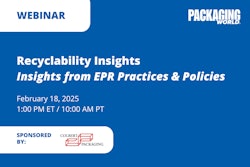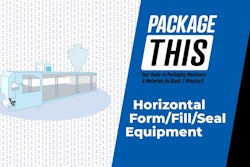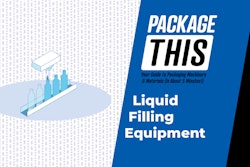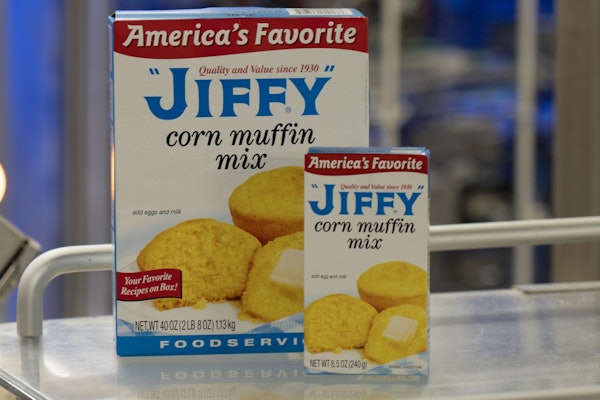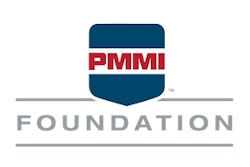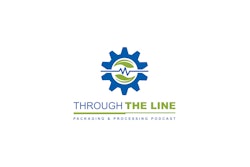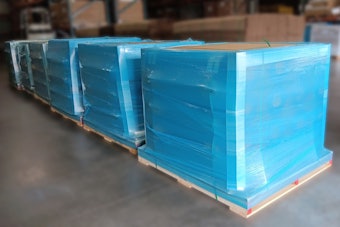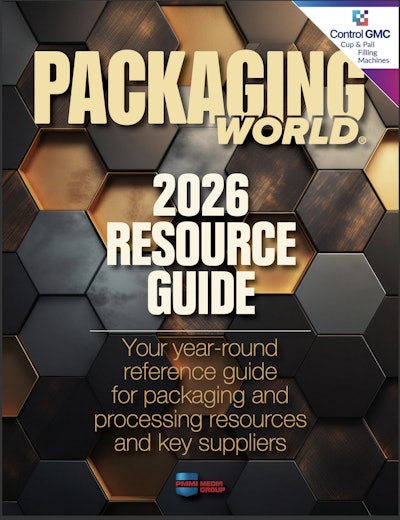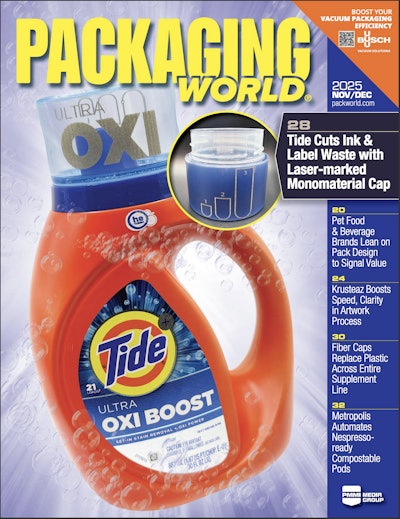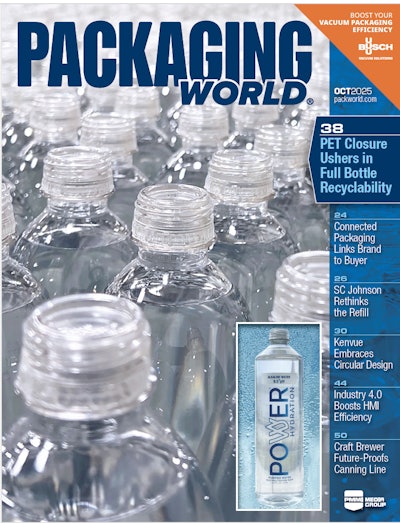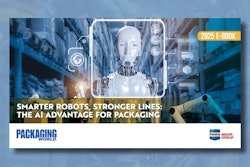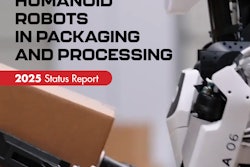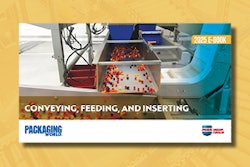
Lilián Robayo of Mundo interviews Anne Johnson of Resource Recycling Systems.
TRANSCRIPT:
What follows is an AI-generated transcription. We regret any errors contained within.
Hello everyone, and welcome to A Coffee with Mundo Expo pack. I'm Lilián Robayo, your host, and this is the first episode of a new series of video interviews. This is a series of informal conversations with industry leaders, market experts and specialists in technological trends shaping the packaging industry. Our goal is to gain available insights and perspectives on the key themes that are impacting the packaging and today, I'm thrilled to share this virtual coffee with a truly special guest, Anne Johnson. Anne is a globally recognized expert in packaging recycling, and serves as the principal and vice president of resource recycling systems, a consultancy company that helps CPGs and communities to optimize recycling and reduce waste. With 27 years of experience and has collaborated closely with CPGs on sustainable packaging design, sustainability strategies and materials recovery, her expertise extends to international recycling challenges with a focus on the US, Europe and Latin America. Anne's previous role as the founder and director of the sustainable packaging coalition in the US have significantly contributed to her expertise in life cycle thinking, material supply chains and sustainable materials management. And it's such a joy to have you here in this first episode.
Thank you, Lillian. It's really wonderful to be here, and thank you for the very kind introduction. Made me realize we've known each other for a very long time, since you know my own pretty so Well,
exactly. Yes. I think it's about 2020, years. Thank you so much. Thank you, Ann, for being here and well, do you have your coffee ready? On
I have my coffee ready? Wonderful. I
hope it is Colombian coffee. All right. All right. I'm going to start on asking you, as a global expert in packaging recycling, which which one would you identify as key emerging trends in packaging recycling in the world and in Latin America,
I'm I wouldn't call this an emerging trend, but I think it's shaping the industry in A really significant way, and that is the anti plastic movement that really has come out of, I think, some of the findings after China's national sword policy, a lot of the mismanagement of waste and recyclables in Southeast Asia and other parts of the world, And then the sort of related levels of plastic pollution in the ocean has really shaped a global movement that is really demonizing plastic. And particularly in North America, we see lots and lots of policy, also in the EU policy directed at at plastics. And that's that's having a huge influence in the industry today. And, you know, early on in my career, when I was starting there was something we called, sort of the the paper and plastic wars, where there was a lot of, you know, discussion about which was better paper or plastic, and a lot of concern from environmentalists over forestry practices. Today, that conversation has really shifted around plastics and around the use of plastic packaging in particular. In response to that, what we see is a lot of global regulation. And I think this is, again, not really an emerging trend, it's a growing trend of the adoption of different policies to both encourage the recovery of packaging. So we see things like extended producer responsibility, which means brands and retailers are the producers are financially and in some cases operationally responsible for the end of life management of their packaging. So we've seen huge growth in EPR across the globe, including in Latin America. And at the same time, EPR is really a supply side type of policy. It grows the volume of recyclables. There's investment in infrastructure, there's investment in consumer education. But at the same time, we need to grow markets. We need to have places where the material we recover and reclaim goes. So we're seeing policies that also encourage market development through the use of recycled content mandates, and also, in some cases, just, you know, I think incentives to encourage investment in different types of end markets. So policy has been this other big emerging trend. As a consequence of that, we've seen a really substantial interest in companies really moving out of plastics where possible. And, you know, really. Moving into other materials, and it could be, in some cases, aluminum, but most importantly, into paper packaging, and really functionalized paper packaging. So in some ways, over my almost 30 year career, we're sort of seeing the pendulum swing in the other direction.
How interesting and, and you mentioned this, this very important aspect of the material shifting, and that is the paperization. You mentioned it. What do you see the potential of that paperization in packaging, replacing plastics and for for paper in Latin America?
Well, I think, I think it's part of the journey to really figure out what is the optimal suite of, you know, packaging types and formats for a region. And I think part of this is driven by what is the infrastructure available to not just recycle materials, but to manage materials. And a lot of the reaction that we're seeing on the policy side is due to really insufficient or deficient solid waste management systems. And looking at the projections in the future and the volumes of waste, this is an issue that's going to be shaping the packaging industry in in the decades to come. There's no doubt about it having there's there's really no way to hide the issues around mismanaged waste, and packaging is a huge component of that waste. So I think now we're seeing, instead of just a focus on designing for recyclability. We're also starting to see companies consider, how do we how do we design for landfill or mismanagement? And that's a different calculus. So we really need to be looking expansively over all the different, you know, ways our packaging may may be managed. You know, it may end up in the environment. It may end up in a landfill or an incinerator, or it may be recycled. And so I think when you talk about that in Latin America, definitely the you know, the challenges around waste management in different countries is really apparent, and you see companies and brands starting to take that into consideration when they select materials. And I think paper is widely regarded as something that, if mismanaged or if put in a landfill, you know, it's going to do less harm. And I think this is a little this is definitely a new concept, but if the paper is highly functionalized with plastic, it may have a comparable impact in the environment. So when I say functionalized, I mean it may have a, you know, heavy poly coat or or some type of lining on it that would remain if the when the cellulose degrades. So it's a really sticky, difficult problem. And I would say that, you know, the real at a certain point, we have to make a commitment to invest in the solutions, like the holistic solutions, which, you know, is very expensive, but it's really good, solid waste management, and given sort of global populations, the glow growth of population In Latin America, this has to be a primary objective, not just of governments, often, who are underfunded, but I think of companies as well, to figure out, how do we end up with really good, holistic solutions for for waste, and that includes packaging,
great and and I this is linked to to this question I had for you, and it's, what piece of advice would you give to CPGs, who are now advancing in packaging, recyclable materials in Latin America? What would be your your piece of advice for the CPGs?
Well, I think this is where you know, most of Latin America, you have growing consumer participation and recycling. You have growing programs, but you still it's not sufficient for the populations, and it typically drops off radically outside large urban areas. And in fact, we see really high rates of mismanagement in rural communities. So I think you know, in most of Latin America, recycling has really evolved from the informal sector collecting, you know, paper, bottles, aluminum, and then we see more formalization through cooperatives in you know that are that are working on this, but a lot of packaging is not being collected because it doesn't really have any value, and We don't have the reverse supply chains for it. Plastic is particularly challenged here because packaging is so diverse. We have so many different kinds of resins. We have so many different kinds of formats, and most importantly, outside of PET bottles, most plastic has very low or no value. So. Which means there's no incentive outside of a policy framework to collect it. And that's just simply the reality that we have to, you know, recognize. And so to overcome that hurdle, we're going to need to have policies. We're going to have to have incentives for why people would want to collect low value materials, and this is a critical issue facing CPGs and facing packaging producers. And I think that, you know, without action, we're going to see really increasingly rigid policies around this, and nobody really benefits from that. But at the same time, I will say, in the US, we have been a largely unregulated market until recently, and voluntary activity has really, really had limited impact. We have had flat to decreasing recycling rates for most plastic commodities, including PET bottles over the last 15 years. So I think there are lessons to be learned from other markets. And the reality is, I just don't think society or anybody really wants to to live in waste, and this is sort of a basic quality and human right issue. So I think that, um, you know, thinking about where true solutions lie, and where where it's best to invest money. And I think part of that is having we can design for recycling, but when we look at current rates outside of materials that really have high value. So aluminum cans, steel, P, E, T, bottles, corrugated there's very little collection for designing for recyclability out of those things that are sort of regularly collected. So you really need to have a sort of different mindset on what you're designing for when it's most likely your material is going to end up in a landfill or possibly littered and I think that that means really understanding what is the infrastructure in the region where you're selling materials. It means converters need to get educated on what is happening to these materials when they're after, you know, use? Are they likely to go to a well managed landfill? A poorly managed landfill? What's the likelihood they may be, you know, littered and really take that into consideration. There are no perfect solutions, but those are the first steps, you know, on getting to better options is being well educated on that. And I'm involved with an organization in the highlands of Guatemala, you know, relatively small community, about 26,000 people, but it's really challenging because there is no waste management system. It's just dumping and ravines. And you know, that obviously has significant limits. And they're, they're looking for solutions for the plastics that enter their community. So, you know, trying to help them figure out what could be done there. That's very different than when you move, you know, let's say to Sao Paulo or Rio, where in the urban enter centers, you have, you know, very good collection. You have, you know, pretty solid recycling systems. But as you move outside of those city centers, you know, services drop off rapidly, and we need to be figuring out how to how to deal with that. Very interesting
and and I remember your great presentation in pack evolution last year on chemical recycling and advanced recycling projects. There seems to be a slowdown in those projects. Do you know what? What's the reason and what's your view on the potential of this technology?
Well, I've been pretty deeply involved in chemical recycling, frankly, from the beginning of my career, and have been watching very closely, sort of, the evolution over, I would really say, since sort of 2017 2018 and it really exploded in interest with, I think, the focus on, you know, marine plastic pollution. I think there was a lot of naivete at the beginning that it was going to be able to handle all of these diverse plastics. Um, and this really stems from people having, you know, lacking the operational knowledge of waste systems. And really, how heterogeneous, how dirty, how complicated these systems are, how much they rely on reverse logistics. So we may be generating material all over the place, but what is the system to actually go collect it, bring it back, sorted into the categories that actually can be processed. So I think. We've seen is a very steep learning curve on the part of technology providers and petrochems as they've started to understand how incredibly challenging this reverse logistics can be, and the fact that there's been an immense focus on sort of residential household waste. In terms of developing system, very little attention has been paid to business to business collection, mostly because that's private business. You know, people contract waste management or do whatever, but we've never developed systems to segregate recyclables, have them collected and taken back, except for things that are worth a lot of money, like corrugated and perhaps distribution films. So I think again, there was sort of an ignorance on the complexity of the system and what would have to be put into place to collect both the volumes of the quality of material you would need for different types of advanced recycling systems. And of course, we know they're very different. You have dissolution systems or depolymerization systems that really need segregated waste, and usually one type of resin, or, you know, one type of packaging. And that means that's just like curbside recycling or residential recycling. Somebody has to take the action. They have to segregate it, they have to collect it and aggregate it. And these technologies are looking for, you know, 10s of 10s of 1000s of tons, if not 100,000 tons of material annually. So they're very large scale, much larger scale than most mechanical Reclaimers. When you get into the thermo chemical technologies, they they have less requirement for segregation, but they may have a they still have a quality requirement. They can't deal with a lot of organics. They don't like having a lot of halides on them. So in other words, salt water is not great. They can't take metals. So there are a lot of things that will end up being contaminants in plastic that could be problematic. So PVC is is up there, P E T, is another one they do not like. P, E T. So what we've seen is really a growth and understanding of the challenge of plastics because of their heterogeneity that get dirty in different environments. And now we're really starting to see the investment in those reverse supply chains, you know, collection system segregation, that that is probably most advanced in Europe. We're getting there in the US. We've seen a massive drop off in the US. We see sort of, I think, the technologies that probably have really done their homework moving forward in the US. But we've also seen a lot of technologies drop out and, you know, move out of the market. We've seen some some success in Latin America. I think greenback technologies is one I visited when I was in Mexico City. I was, honestly, that was an amazing operation that had was based on such deep understanding of how collection occurs. You know, really great technology for sorting. And then, you know, partnering the segregation and sortation with a unit right next door, it was very, very impressive.
What we're seeing in Latin America, a trend and on CPGs making inroads in degradable films for packaging. What's your opinion on the potential of this strategy of using, of using degradable films and for packaging?
Well, I think there's a lot of really exciting innovations. You know, I think we've seen huge growth in PHAs as a, you know, as a biodegradable polymer that has a lot of physical properties, very similar to polypropylene. You know, it's still its commercialization is still early stages, and it's very expensive, you know, compared to its its fossil fuel sort of sisters. However, I think the issue around degradable plastics is inherently really complicated. It has has a long history. And degradable plastics doesn't mean it goes away necessarily, and it it gives the appearance of polymers degrading, but basically what it does is it fragments them, and we may end up with, you know, micro plastics or nano plastics. So I think we have to be really knowledgeable and really well educated. And we've seen sort of this unfortunate trend of people going into markets where there's a. A, you know, a lot of problems with plastic pollution, selling these additives and sort of promising this is the solution. You know, plastic pollution will go away if you just do this. You know, if it sounds too good, it probably is too good. And you really have to do your homework to understand what these solutions do. You know, some of them require light to or in order for them to degrade. So if they're in a landfill, it's not going to work. Some of them won't degrade in water or in the marine environment. You know, some of them will only degrade or biodegrade if they're in a managed composting system. So it's a really, it's an area where you really need to be well educated and understood specifically what the mechanism you know for degradation, or bio degradation is. And then think about again, where are the places this package is likely to go, and what does it mean in those different areas, and is it actually going to have the desired result
to wrap up now, to to finish this, this interview, I would like to ask you an about lessons. What can we learn from contrasting recycling practices in the US and Latin America? How can the local recycling models help overcome infrastructure challenges in Latin America.
I think the biggest lesson is from communities that do well, you know. And I think that's communities that have invested generationally in consumer education on recycling, consumer education on you know, it's not just recycling, but it's other things that could be food waste management, energy use, all sorts of things. There are some real star communities in the US that have have really, I think, made this a priority in their communities, and you see its impact. They end up being the role models. And what you see, it's not one and done. You don't and you don't educate one generation and expect it to change the world. What you have to do is continuous education. I call this creating stewards, and this is really critical for companies, for businesses to play a big role in this.


